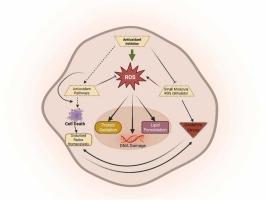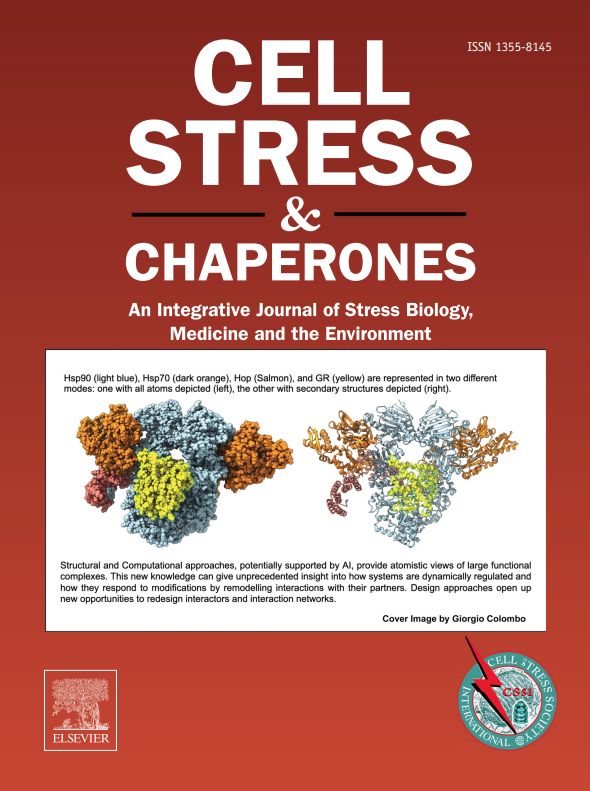Reactive oxygen species in cancer: Mechanistic insights and therapeutic innovations
IF 3.2
3区 生物学
Q3 CELL BIOLOGY
引用次数: 0
Abstract
Reactive oxygen species (ROS), once considered mere metabolic byproducts, are now recognized as crucial elements in the complex behavior of cancer, influencing both its progression and vulnerabilities. In healthy cells, ROS maintains a delicate balance: while small amounts are essential for signaling, excessive quantities can cause damage. Cancer disrupts this equilibrium, leveraging ROS to promote proliferation, metastasis, and survival, while employing antioxidant defenses to prevent self-destruction. It is the balance of ROS that is key to cancer growth: as they initiate cancer-related processes such as Mitogen-Activated Protein Kinase (MAPK), PI3K/Akt, and c-Jun N-terminal Kinase (JNK) pathways, and induce inflammation through NF-κB. Additionally, matrix metalloproteinases (MMPs) and vascular endothelial growth factor (VEGF) break down tissue barriers, fostering a tumor microenvironment (TME) conducive to cancer spread. However, this dependence on ROS presents a dual challenge. The timing, location, and quantity of radical formation, along with the surrounding cellular environment, determine whether ROS facilitate cancer progression or lead to cancer cell death. Disrupting this delicate balance of ROS may reveal new treatment methods, transforming cancer's survival mechanisms into significant weaknesses. This study explores the dual roles of ROS in cancer, examining how their contrasting effects impact tumor growth and revealing unexpected opportunities to shift the balance from growth to vulnerability.

活性氧在癌症中的作用:机制见解和治疗创新。
活性氧(ROS),曾经被认为仅仅是代谢副产物,现在被认为是癌症复杂行为的关键因素,影响其进展和脆弱性。在健康细胞中,活性氧维持着一种微妙的平衡:少量的活性氧对信号传导至关重要,过量的活性氧会造成损伤。癌症破坏了这种平衡,利用ROS促进增殖、转移和生存,同时利用抗氧化防御来防止自我毁灭。ROS的平衡是癌症生长的关键:因为它们启动癌症相关的过程,如MAPK、PI3K/Akt和JNK途径,并通过NF-κB诱导炎症。此外,基质金属蛋白酶(MMPs)和血管内皮生长因子(VEGF)打破组织屏障,形成有利于癌症扩散的肿瘤微环境(TME)。然而,这种对活性氧的依赖带来了双重挑战。自由基形成的时间、位置和数量以及周围的细胞环境决定了ROS是促进癌症进展还是导致癌细胞死亡。破坏ROS的这种微妙平衡可能会揭示新的治疗方法,将癌症的生存机制转变为重大弱点。本研究探讨了活性氧在癌症中的双重作用,研究了它们的不同作用如何影响肿瘤生长,并揭示了将平衡从生长转向易损性的意外机会。
本文章由计算机程序翻译,如有差异,请以英文原文为准。
求助全文
约1分钟内获得全文
求助全文
来源期刊

Cell Stress & Chaperones
生物-细胞生物学
CiteScore
7.60
自引率
2.60%
发文量
59
审稿时长
6-12 weeks
期刊介绍:
Cell Stress and Chaperones is an integrative journal that bridges the gap between laboratory model systems and natural populations. The journal captures the eclectic spirit of the cellular stress response field in a single, concentrated source of current information. Major emphasis is placed on the effects of climate change on individual species in the natural environment and their capacity to adapt. This emphasis expands our focus on stress biology and medicine by linking climate change effects to research on cellular stress responses of animals, micro-organisms and plants.
 求助内容:
求助内容: 应助结果提醒方式:
应助结果提醒方式:


